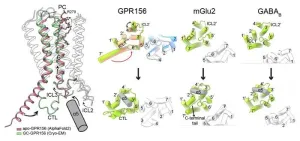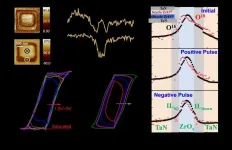The findings offer a crucial animal model for investigating the neural basis of numerical ability and disability in humans, the Hong Kong-based researchers say.
This innovative study deployed a numerical learning task, brain manipulation techniques and AI modelling to tackle an ongoing debate about whether rats can count, says Professor Yung Wing-ho, Chair Professor of Cognitive Neuroscience at CityUHK, who collaborated with CUHK scientists at the Faculty of Medicine.
Their study, published in Science Advances, sheds light on the mechanisms underlying numerical ability, a cognitive ability fundamental to mathematical aptitude, which is a hallmark of human intelligence. The article is titled “Disparate processing of numerosity and associated continuous magnitudes in rats”.
Professor Yung, also Associate Dean of the Jockey Club College of Veterinary Medicine and Life Sciences at CityUHK, said the research team set out to minimise the influence of continuous magnitudes in numerical tests and conducted a meticulous quantitative analysis in the study to determine the respective contributions of numbers and magnitudes.
The team developed an algorithm to generate stimuli that enable animals to focus only on numbers and minimise other distracting factors.
“This will help us better understand how animals perceive and quantify numbers,” Professor Yung explains.
The team found that rats without any previous knowledge of numbers could develop a sense of numbers when trained with sounds representing two or three numbers. Despite the influence of continuous magnitudes, the rats consistently focused on the number of sounds when making choices for food rewards.
In addition, the study helps dissect the relationship between magnitude and numerosity processing. The researchers discovered that when they blocked a specific part of the rats’ brains, called the posterior parietal cortex, the rats’ ability to understand numbers was affected but not their sense of magnitude. This suggests that the brain has a specific area for dealing with numbers, Professor Yung continues.
The study not only solves a long-standing mystery about how brains handle numbers but also offers new insights into studying the specific neural circuits involved in number processing in animals and how genes are associated with mathematical ability. The findings from neural network modelling could have practical applications in the field of AI.
Professor Yung and Professor Ke Ya from the School of Biomedical Sciences at the CUHK Faculty of Medicine are the corresponding authors. Other contributing authors include Dr Liang Tuo, Dr Peng Rongchao, Mr Rong Kanglin and Ms Li Jiaxin from CUHK.
END
Can animals count?
Neuroscientists in Hong Kong identify a sense of numeracy among rodents
2024-04-16
(Press-News.org) HONG KONG (16 April 2024)—A groundbreaking discovery that appears to confirm the existence of discrete number sense in rats has been announced by a joint research team from City University of Hong Kong (CityUHK) and The Chinese University of Hong Kong (CUHK).
ELSE PRESS RELEASES FROM THIS DATE:
Australian media need generative AI policies to help navigate misinformation and disinformation
2024-04-16
New research into generative AI images shows only over a third of media organisations surveyed at the time of research have an image-specific AI policy in place.
The study, led by RMIT University in collaboration with Washington State University and the QUT Digital Media Research Centre, interviewed 20 photo editors or related roles from 16 leading public and commercial media organisations across Europe, Australia and the US about their perceptions of generative AI technologies in visual journalism.
Lead researcher and RMIT Senior Lecturer, Dr TJ Thomson, said while most staff interviewed ...
Illuminating the path to hearing recovery
2024-04-16
Professor Yunje Cho’s research team from the Department of Life Sciences at Pohang University of Science and Technology (POSTECH, Republic of Korea) has collaborated with Professor Kwang Pyo Kim’s group from the Department of Applied Chemistry at Kyung Hee University (KHU, ROK), Professor Vsevolod Katritch’s team from the University of Southern California (USC, USA), and Professor Carol V. Robinson from the University of Oxford (UK) to uncover the mysteries surrounding a specific receptor protein associated with hearing. Their findings have recently been published in the online edition of Nature Structural & Molecular Biology.
Deep ...
Unlocking the secrets of fruit quality: How anthocyanins and acidity shape consumer preferences and market value
2024-04-16
A research team reviews the critical relationship between the accumulation of anthocyanins and organic acids in fruits, highlighting how these factors influence fruit color and consumer appeal through changes in vacuolar pH. The analysis focused on the transcription factors (TFs) responsible for the co-regulation of genes affecting these quality traits, aiming to enhance fruit marketability. By establishing a genetic link and identifying the regulatory mechanisms involved, the team provides a roadmap for breeders to target specific traits for modification. Although progress has been made, the review underlines the ...
Evidence for reversible oxygen ion movement during electrical pulsing: enabler of the emerging ferroelectricity in binary oxides
2024-04-16
Ferroelectric binary oxides thin films are garnering attention for their superior compatibility over traditional perovskite-based ferroelectric materials. Its compatibility and scalability within the CMOS framework make it an ideal candidate for integrating ferroelectric devices into mainstream semiconductor components, including next-generation memory devices and various logic devices such as Ferroelectric Field-effect Transistor, and Negative Capacitance Field-effect Transistor. It has been reported that challenges ...
Revolutionizing Citrus cultivation: The superior tolerance and growth vigor of 'Shuzhen No.1' rootstock
2024-04-16
Citrus is the world’s most economically significant fruit crop, but it faces various environmental adversities that restrict its distribution. Grafting is a crucial factor in enhancing citrus productivity. Current research focuses on selecting genetically uniform rootstocks, such as trifoliate orange for its disease resistance. However, issues such as sensitivity to alkalinity and incompatibility with certain cultivars persist.
Addressing these challenges, a study (DOI: 10.48130/frures-0023-0042) published in Fruit Research on 01 February 2024, introduces 'Shuzhen No.1', a novel rootstock ...
Family and media pressure to lose weight in adolescence linked to how people value themselves almost two decades later
2024-04-16
People who as teenagers felt pressure to lose weight from family or from the media, females, people who are not heterosexual, and people experiencing socioeconomic disadvantage, are most at risk of ‘internalised’ weight stigma, new research led by the University of Bristol has found. The study is published in The Lancet Regional Health Europe today [15 April].
‘Internalised’ weight stigma, is when people apply negative obesity-related stereotypes to themselves, such as thinking they are less attractive, less competent, or less valuable as a person because of their weight. This is the first time a study has used a large UK sample to examine who is most at risk.
In ...
Despite the desire to reduce the risk of imitation, new research suggests startups should scale slowly and steadily
2024-04-16
A new study published in the Strategic Management Journal cautions startups against prioritizing early scaling, as it’s positively associated with a higher rate of firm failure — especially for platform companies. Although managers could see the potential benefits of scaling as a way to prevent competitor imitation, scaling early can also prematurely curtail learning through experimentation and committing to a business idea that lacks product-market fit.
Although a few high-growth startups such as Facebook and Uber made their fortunes by scaling early — also known as “blitzscaling” — study authors Saerom (Ronnie) Lee and ...
The Lancet: Many people with breast cancer ‘systematically left behind’ due to inaction on inequities and hidden suffering
2024-04-16
**Embargo: 23.30 [UK time] / 19.30 [ET], Monday 15 April 2024**
Peer-reviewed/Literature review, Survey, and Opinion/People
Embargoed access to the papers and contact details for authors and patient advocates are available in Notes to Editors at the end of the release.
Breast cancer is now the world’s most common cancer; at the end of 2020, 7.8 million women were alive having been diagnosed in the previous five years. In the same year, 685,000 women died from the disease. Despite significant improvements in research, treatment, and survival, gross inequities persist, and many patients ...
From opioid overdose to treatment initiation: outcomes associated with peer support in emergency departments
2024-04-16
People with a nonfatal opioid overdose who have access to a peer support program while in the emergency department are more likely to initiate treatment and less likely to have repeated overdoses, according to a Rutgers Health study.
The study is the largest study on outcomes associated with emergency department-based peer support for opioid use disorders and was published in JAMA Network Open online ahead of print in the April 2024 issue.
According to the Centers for Disease ...
NIH awards $3.4 million to Wayne State University to investigate biomarkers for better reproductive success
2024-04-16
DETROIT - The diagnosis of male fertility has not changed in decades and primarily relies on conventional semen parameter analyses such as sperm count, motility and morphology, which are poor predictors of couples’ reproductive success.
A new $3.4 million award to the Wayne State University School of Medicine from the National Institutes of Health aims to overcome the limitations of conventional semen analyses by examining mitochondrial DNA levels in sperm as a novel biomarker of sperm fitness.
The project will be led by School of Medicine Professor of Obstetrics and Gynecology J. Richard Pilsner, Ph.D., M.P.H. ...
LAST 30 PRESS RELEASES:
First Editorial of 2026: Resisting AI slop
Joint ground- and space-based observations reveal Saturn-mass rogue planet
Inheritable genetic variant offers protection against blood cancer risk and progression
Pigs settled Pacific islands alongside early human voyagers
A Coral reef’s daily pulse reshapes microbes in surrounding waters
EAST Tokamak experiments exceed plasma density limit, offering new approach to fusion ignition
Groundbreaking discovery reveals Africa’s oldest cremation pyre and complex ritual practices
First breathing ‘lung-on-chip’ developed using genetically identical cells
How people moved pigs across the Pacific
Interaction of climate change and human activity and its impact on plant diversity in Qinghai-Tibet plateau
From addressing uncertainty to national strategy: an interpretation of Professor Lim Siong Guan’s views
Clinical trials on AI language model use in digestive healthcare
Scientists improve robotic visual–inertial trajectory localization accuracy using cross-modal interaction and selection techniques
Correlation between cancer cachexia and immune-related adverse events in HCC
Human adipose tissue: a new source for functional organoids
Metro lines double as freight highways during off-peak hours, Beijing study shows
Biomedical functions and applications of nanomaterials in tumor diagnosis and treatment: perspectives from ophthalmic oncology
3D imaging unveils how passivation improves perovskite solar cell performance
Enriching framework Al sites in 8-membered rings of Cu-SSZ-39 zeolite to enhance low-temperature ammonia selective catalytic reduction performance
AI-powered RNA drug development: a new frontier in therapeutics
Decoupling the HOR enhancement on PtRu: Dynamically matching interfacial water to reaction coordinates
Sulfur isn’t poisonous when it synergistically acts with phosphine in olefins hydroformylation
URI researchers uncover molecular mechanisms behind speciation in corals
Chitin based carbon aerogel offers a cleaner way to store thermal energy
Tracing hidden sources of nitrate pollution in rapidly changing rural urban landscapes
Viruses on plastic pollution may quietly accelerate the spread of antibiotic resistance
Three UH Rainbow Babies & Children’s faculty elected to prestigious American Pediatric Society
Tunnel resilience models unveiled to aid post-earthquake recovery
Satellite communication systems: the future of 5G/6G connectivity
Space computing power networks: a new frontier for satellite technologies
[Press-News.org] Can animals count?Neuroscientists in Hong Kong identify a sense of numeracy among rodents




